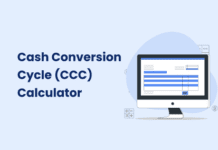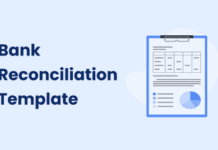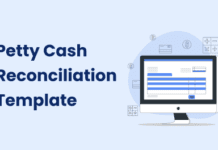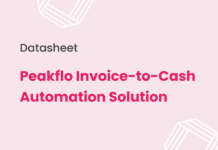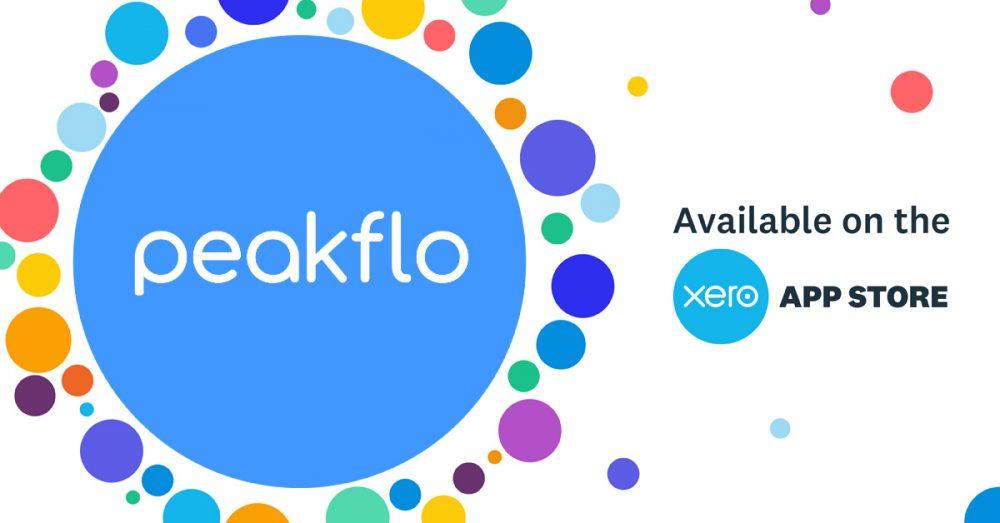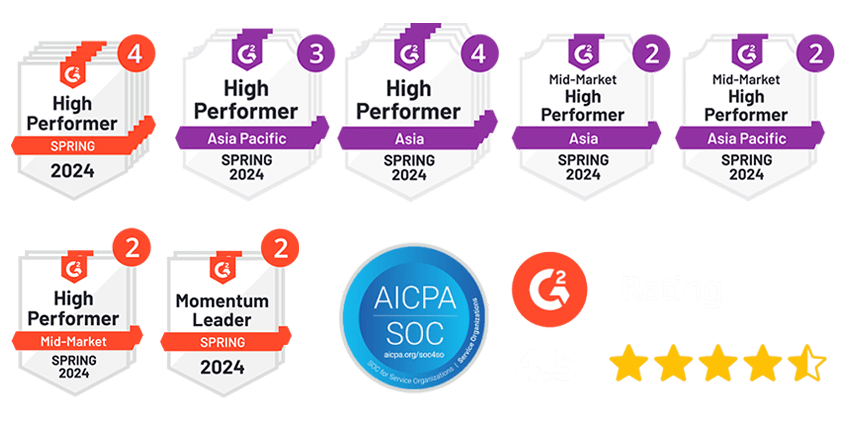Traditional debt collection methods achieve success rates nowhere near 20%. This reality has led businesses to explore AI voice agents for collections. Companies struggle with outdated recovery methods that fail to address modern collection challenges, especially as operations need to grow.
AI voice call technology delivers impressive results. Companies report 50% better collection efficiency and save 30% on operational costs. AI voice conversation solutions get 40% higher answer rates than manual calls. Recovery rates soar by 20-40%. These numbers tell a compelling story. A 2024 survey reveals that 58% of debtors actually prefer automated systems with flexible payment options.
In this piece, we’ll show you why AI-powered collection calls perform better than traditional human calls in 2025. You’ll learn how these systems work and the steps to add this technology to your collection strategy.
Why Human-Driven Debt Collection Falls Short in 2025
Technology has advanced, yet human-driven debt collection still faces major challenges in 2025. More than 70 million Americans get contacted about debts each year. The effectiveness of traditional collection methods remains questionable. Here’s why human agents struggle to keep up with modern collection needs.
1. Manual errors and inconsistent follow-ups
Traditional debt collection heavily depends on manual processes that create multiple failure points. Paper-based communications often have human errors that delay payment processing. These mistakes directly affect your bottom line. They increase Days Sales Outstanding and make operations get pricier.
Poor follow-ups create another weakness. Companies lose vital information about debtor history without proper systems. This makes it impossible to maintain consistent collections. Our industry data reveals that late reminders make debtors pay other bills first. Missed follow-ups lead to huge recovery losses.
Manual data entry mistakes show up throughout the collection process—from wrong invoice amounts to lost payment records. These errors often go unnoticed until it’s too late. This creates expensive reconciliation problems and damages customer relationships.
2. Limited working hours and scalability issues
Human-driven collection teams can’t scale effectively. Contact centers need huge investments to grow, with high costs to hire, train, and keep staff. The teams can only work with debtors during business hours, which means many collection opportunities slip away.
Scalability becomes a bigger problem during busy periods. Traditional collection models work poorly as account numbers grow. This creates bottlenecks that overwhelm contact centers. Agents end up with less time per account, which leads to rushed conversations and lower recovery rates.
Hiring more collectors is expensive and yields diminishing returns. New hire training strains existing resources. The unpredictable performance of new staff makes scaling through hiring more of a gamble than a strategic choice.
3. Negative customer experiences and low trust
The most worrying aspect comes from the poor customer experience that human-driven collections create. More than one in four consumers say debt collectors make them feel threatened. On top of that, 36% of consumers get calls at the wrong hours between 9 p.m. and 8 a.m.. This breaks regulations and destroys trust.
Collection attempts happen too often and damage customer relationships. About 37% of consumers get contacted four or more times weekly. This creates feelings of harassment instead of service. The aggressive approach backfires—harassed customers are less likely to pay.
Traditional collection calls fail to provide flexibility and self-service options that modern consumers want. The lack of digital payment options and 24/7 access creates friction. This delays resolution and frustrates customers who prefer digital interactions.
How AI Voice Conversations Transform Collection Campaigns
Image Source: LeewayHertz
AI voice technology is transforming debt collection practices in 2025. Traditional methods have their limits, but AI-powered solutions will give a tailored experience that produces results. A third-party collection agency saw a 7x improvement in connect rates and a 3x rise in recovery after they started using AI voice agents for their Tier-1 calls.
1. Personalized, data-driven interactions
AI voice agents look at customer data to create communications that strike a chord with each debtor. These systems talk naturally with debtors instead of making generic collection calls. They use the debtor’s name and adjust messages based on past payments. This personal touch creates better results.
The technology does more than just automate tasks. AI-powered voice bots look at payment records, communication priorities, and financial status to craft messages that speak to each debtor’s situation. Collection agencies can group debtors more effectively with this data-driven method and offer custom outreach plans that boost participation rates.
Invoice collection becomes easier with round-the-clock AI-powered help. Peakflo Voice AI agents handle basic questions, solve problems right away, and naturally pass complex issues to human agents. Every customer gets the attention they deserve.
2. Behavioral analytics for better timing
Good timing makes a big difference in debt collection. AI voice agents study behavior patterns to find the best time to reach debtors. These systems get better results by sending reminders when data shows that debtors are ready to talk.
This smart approach works outside regular business hours. AI voice agents make calls when debtors are most likely to answer, whether early morning or evening, which leads to more successful contacts and recoveries. One collection agency tried this method and saw its connect rates jump seven times higher.
3. Multilingual and emotion-aware communication
Modern AI voice agents can speak multiple languages and switch to the debtor’s preferred language automatically. Businesses that work globally find this feature helps build trust with different customer groups.
These advanced AI systems now understand emotions, too. They can detect vulnerability with 86%+ accuracy. The systems pick up on tone and feelings in live conversations and adjust their approach.
Unlike older automated systems, AI voice agents can smoothly transfer calls to real people when conversations get complicated. Debtors get the right level of support while keeping the collection process running smoothly.
Benefits of Conversational AI for Debt Collection
Image Source: Gnani.ai
The benefits of implementing conversational AI for collections go way beyond simple automation. Organizations that use advanced AI capabilities to help customers and manage collections can cut operational expenses by 40% and boost recoveries by about 10%. These real results explain why collection agencies are quickly adopting AI-powered systems to boost recovery rates and give customers a better experience.
1. Higher collection rates and faster payments
Conversational AI speeds up debt recovery significantly. Companies that use AI-driven collection strategies see delinquent loans drop by more than 25% and bad debt decrease by up to 20%. AI voice agents are particularly effective – they boost resolution rates by 20%. They do this by reaching out to debtors through channels they prefer at the best possible times.
The system works around the clock, so no payment opportunity slips through the cracks. Debtors can settle their accounts whenever they want, which leads to quicker recoveries and better cash flow. One collection agency that tried this approach saw an 80% recovery rate on delinquent accounts.
2. Reduced agent workload and operational costs
AI voice conversation systems deliver impressive operational results. Companies can cut debtor coverage costs by up to 70% while their collectors become 42% more productive.
The system handles up to 90% of routine collection tasks. This lets human agents focus on complex cases that need personal attention. AI chatbots and voicebots can manage more than 60% of incoming calls, which helps collection teams grow without adding too many new staff.
3. Improved debtor satisfaction and engagement
AI voice call technology makes the collection process better for customers, too. Collection departments that use conversational AI see customer satisfaction scores jump by up to 30%. Debtors feel more in control of their repayment options and face less stress than they would talking to human collectors.
Many debtors actually like automated systems better. About 53% of collection companies now use AI for virtual negotiations. This gives customers a way to resolve debts without feeling judged. Self-service options match modern consumer priorities – 67% of consumers would rather help themselves than talk to company representatives.
AI voice agents use personalized scripts with a compassionate touch. This changes collections from a confrontational process into something more supportive that builds stronger customer relationships.
How AI Voice Agents Work in Real Debt Collection Scenarios
Debt collection success depends more on practical implementation than theoretical potential. AI voice agents for collections work through sophisticated processes that manage the complete debt recovery lifecycle. These systems use well-laid-out workflows to mirror human-like conversations while staying compliant with regulations.
1. Automated payment reminders and follow-ups
AI voice agents make collection calls based on specific triggers like missed payment deadlines or loan defaults. The systems create personalized reminder sequences that start with gentle notifications before the due date. These progress to firmer reminders on the due date and recovery-focused follow-ups for overdue accounts.
Multi-channel coordination gives these systems their real strength. The AI switches to fallback options like SMS or WhatsApp messages with secure payment links when voice calls go unanswered. This persistent yet respectful approach gets results – automated voice reminders improve on-time payments by 20-30% compared to email-only strategies.
2. Handling queries and offering payment plans
Modern AI voice agents go beyond simple reminders to have meaningful conversations with debtors. They check customer identity, explain why they’re calling, and answer common questions about balances, payment history, and available options.
The AI detects financial hardship through tone analysis and keywords like “struggling” when customers mention it. Based on your rules about maximum installment periods or minimum payment thresholds, the system then presents pre-approved payment plans. This autonomous negotiation approach works well – acceptance rates for AI-offered payment plans are a big deal, as it means that 60%, which reduces write-offs.
3. Secure payment processing and CRM integration
Security stays crucial throughout the collection process. AI voice agents use end-to-end encryption and adhere to PCI-DSS standards when processing payments. The CCAI Platform provides secure payment processing where sensitive information stays protected – agents cannot hear callers, and callers cannot hear agents during transactions.
Continuous connection with CRM ensures your systems update automatically. AI agents link to existing payment gateways, CRM platforms, and accounting software. This eliminates manual updates. Each interaction creates detailed activity logs with agent information, transaction details, payment status, and timestamps.
Implementing AI Voice Agents in Your Collection Strategy
AI voice agents need careful integration with your current systems and processes to work well in collections. Organizations can get the best results by following a clear plan when they switch to AI-powered debt recovery.
1. Integrating with CRM and payment systems
Modern AI platforms need to combine smoothly with your existing infrastructure. These platforms connect directly to CRM systems like Salesforce, FICO Debt Manager, and LexisNexis. Your customer information stays up to date during all interactions through live data syncing.
Payment processing plays a vital role, too. AI voice agents guide debtors through transactions safely while following PCI-DSS compliance. The system processes payments without human help by connecting to payment gateways and updating account status right away.
2. Setting up automated workflows and follow-ups
After integration, you should create custom collection workflows. Good systems let you:
- Schedule reminders through calls, SMS, and email
- Set up different paths for various debt scenarios
- Adjust messages based on account status and history
Peakflo Voice AI agents transform invoice collection with round-the-clock support. They handle basic questions, solve problems quickly, and pass complex issues to human agents when needed. This approach makes every customer feel important.
The AI voice system should start reaching out as soon as payments are missed. It then follows specific steps based on how debtors respond. These workflows copy your current collection strategy but remove manual work.
3. Tracking performance with real-time analytics
AI voice agents do more than automate tasks—they provide live analytics that help improve your collection efforts. The best platforms show important metrics on easy-to-read dashboards.
You can track collection rates, response times, and successful payments. The most useful systems give detailed reports about customer interactions. These reports help you keep making your approach better.
Advanced platforms use predictive analytics to spot possible problems early. This feature shows how conversational AI helps with debt collection beyond basic automation. The system keeps learning and improving.
Future-Proofing Your Collections with AI
The debt collection software market adapts faster to meet changing regulations. Market projections show growth to $7.40 billion by 2028 with a CAGR of 10.91%. AI has become crucial to creating collection strategies that will work in the future.
1. Adapting to evolving regulations
Collection laws keep changing and create new compliance challenges. AI systems watch collection activities and compare them to internal policies and legal rules like FDCPA, CFPB, and TCPA. The systems spot compliance problems right away and tell the right people so they can fix issues quickly.
AI adapts to new regulations better than fixed compliance methods. Teams can update the AI platform much more easily than teaching new rules to human staff. Companies can stay compliant without spending more on overhead.
2. Using sentiment analysis and adaptive AI
Sentiment analysis makes collections more effective over time. Modern systems can read customer emotions with 86%+ accuracy, which leads to more understanding conversations about debt recovery. The AI tracks mood changes during calls and notices subtle hints like stress levels going up.
This emotional awareness helps make better collection plans. The AI gets smarter and updates its predictions as new details come in. To cite an instance, the AI can suggest suitable payment options if someone hits financial trouble.
3. Scaling globally with minimal resources
AI voice agents work better than old collection methods for global growth. These agents speak 150+ languages and keep collection strategies consistent in different countries and time zones.
AI systems can handle more work without hiring more people. The AI takes on extra cases right away during economic downturns. Small debts that companies used to ignore have now become worth collecting.
AI works with blockchain to create secure records of payments and communications. This partnership makes collections both scalable and secure, key features for future success.
How Peakflo AI Voice Agents Help?
Peakflo’s AI Voice Agents represent a transformative leap in collections innovation—automating high‑volume outreach so your finance team can dedicate time to strategic priorities. These intelligent voice bots are purpose-built to emulate human conversation while managing routine payment‑recovery tasks efficiently.
1. Seamless, High-Volume Conversations
By automating every outbound and inbound call—especially for invoice collections—Peakflo Voice Agents scale outreach effortlessly. They ensure that customers receive friendly reminders, confirmation of overdue payments, and resolution prompts in a natural voice, day or night. This offloads much of the repetitive work, letting your human agents focus on high-impact cases.
2. Smart Contextual Awareness
Unlike rigid auto-dialers, Peakflo’s voice agents are part of its “Agentic Workflows” platform. They learn from your existing AR procedures and dynamically adapt messages based on customer profiles, payment history, and past communication patterns. This contextual intelligence means conversations feel personalized and relevant, not robotic.
3. Multi-Channel Coordination
While voice calls are their specialty, these agents work in concert with an array of communication channels—emails, SMS, and more—triggered automatically by workflow rules. This multichannel approach ensures your customers receive reminders in their preferred format, improving reach and response rates.
4. Productivity and Accuracy Gains
Peakflo’s automation not only accelerates payment recovery but also significantly reduces manual effort. Their platform reports that such AI workflows can eliminate up to 95% of manual intervention in tasks like invoice follow-up and reconciliation. This translates into fewer errors, faster cash flow, and a healthier working capital cycle.
5. Tailored to Your Processes
Each business has unique payment terms, escalation protocols, and approval hierarchies. Peakflo’s AI Voice Agents are fully customizable, molding to your framework rather than forcing change, ensuring operational reliability and compliance.
Ready to experience AI agents that sound and work like real team members? Schedule a free demo and see how Peakflo can transform your collection operations.
Conclusion
AI voice agents will shape the future of debt recovery. Traditional human-driven collection methods achieve less than 20% success rates. AI-powered solutions deliver better results in every important metric.
Numbers tell the real story. Companies that use AI voice technology collect 50% more debt and cut operating costs by 30%. These systems work around the clock without human error or the scaling issues that limit traditional approaches.
The most interesting finding? Customers actually like it better. About 58% of debtors prefer automated systems. They appreciate talking to machines that don’t judge them, offer flexible payment plans, and stay available 24/7. This leads to quicker payments, higher collection rates, and better relationships with customers.
Companies that welcome AI voice agents now will pull ahead with better recovery rates, lower costs, and happier customers. Those who wait risk falling behind as this technology becomes the go-to choice for smart, compliant, and customer-friendly collections.
FAQs
Q1. How do AI voice agents improve debt collection efficiency?
AI voice agents can increase collection efficiency by up to 50% through personalized, data-driven interactions, 24/7 availability, and the ability to handle a high volume of accounts simultaneously. They can analyze customer data to determine optimal contact times and methods, resulting in higher contact and recovery rates.
Q2. Are AI voice agents more cost-effective than human debt collectors?
Yes, AI voice agents can reduce operational costs by up to 30% compared to traditional human-driven collection methods. They eliminate the need for large call center staff, reduce training costs, and can scale operations without proportional increases in expenses.
Q3. How do customers respond to AI voice agents in debt collection?
Surprisingly, many customers prefer interacting with AI voice agents. About 58% of debtors favor automated systems that offer flexible payment options and 24/7 availability. AI agents can provide a judgment-free environment for resolving debts, leading to improved customer satisfaction.
Q4. Can AI voice agents handle complex debt collection scenarios?
Yes, modern AI voice agents can handle complex scenarios. They can verify customer identity, answer common questions, offer customized payment plans, and even detect customer emotions. For particularly complex cases, they can seamlessly transfer the call to a human agent.
Q5. How do AI voice agents ensure compliance with debt collection regulations?
AI voice agents are programmed to adhere to debt collection regulations such as FDCPA, CFPB, and TCPA. They monitor interactions in real-time, ensuring compliance with internal policies and legal requirements. AI systems can quickly adapt to regulatory changes, making it easier to maintain compliance across operations.









![Why AI Sales Calls Are Making Good Sales Reps Even Better [2025 Guide] ai sales calls](https://cdn-kmjmp.nitrocdn.com/YvtqmrsiHUxqerlSiZgbfzqqTARWTElr/assets/images/optimized/rev-834053b/blog.peakflo.co/wp-content/uploads/2025/09/65168cf6-3001-4733-8cbc-12d5684cf449-218x150.webp)










